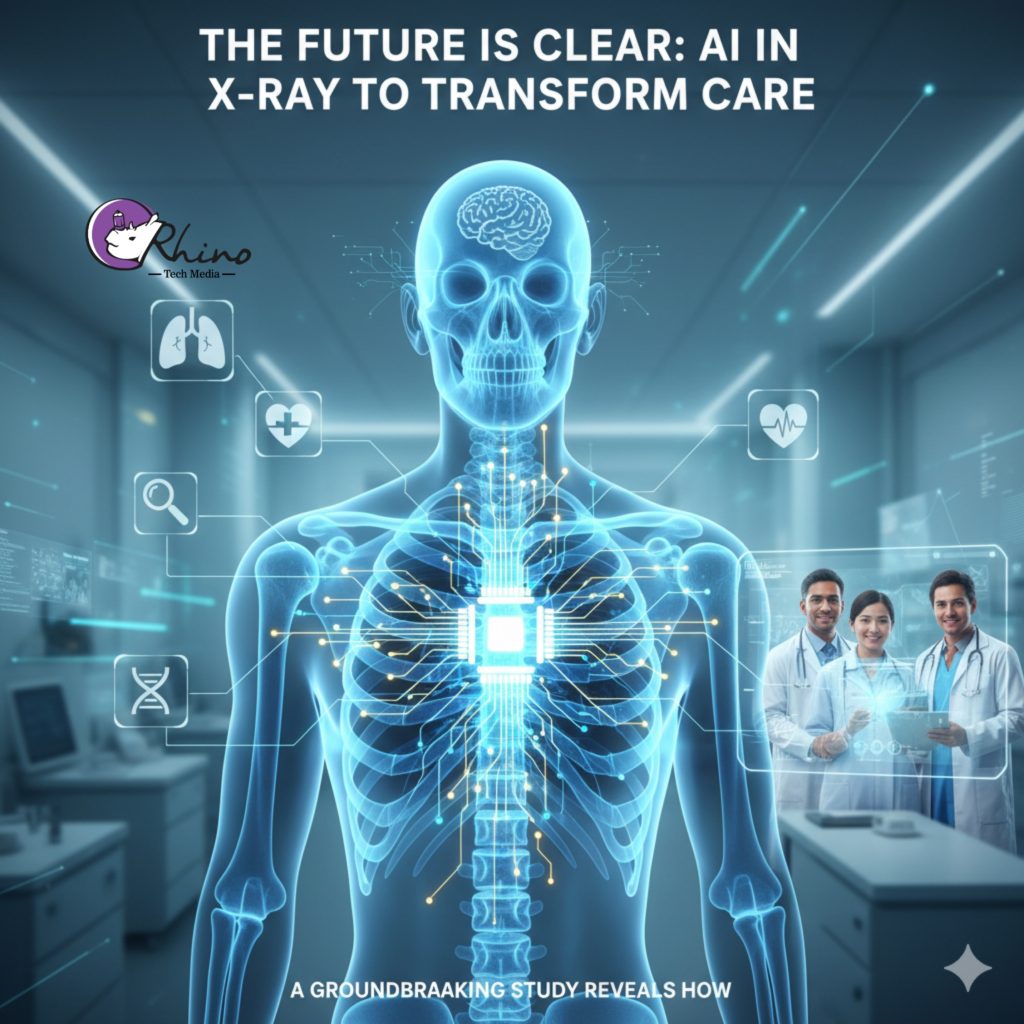Artificial intelligence that can predict how an X-ray will look in the future represents a striking new direction for medical imaging. A study from researchers at the University of Surrey and coverage in the press this week describe an AI model trained on longitudinal knee X-rays that can generate a patient’s likely knee image a year ahead — a capability the authors say could change how osteoarthritis is monitored, personalised, and treated. This report summarises the study, explains its methods and results at a high level, discusses likely clinical impacts and limitations, and offers a cautious view of the road to routine use.
What the study did (summary)
Researchers assembled one of the largest osteoarthritis imaging datasets reported to date and trained a predictive model to take a current knee X-ray and output what the same patient’s knee X-ray would likely look like one year later. According to the team, the model used nearly 50,000 X-rays from almost 5,000 patients — enabling it to learn typical progression patterns of joint space narrowing, osteophyte development and other radiographic markers of osteoarthritis. The authors highlight that the model is compact and fast compared with prior tools, which makes it more feasible for clinical workflows.
How it works (high-level)
Rather than classifying an image (for example “OA present / absent”), the approach is generative and longitudinal: the AI learns mapping rules from time-series X-ray pairs and synthesises a plausible future image conditioned on the baseline image and — in some implementations — clinical metadata. Technically, these systems often combine convolutional deep networks with generative architectures (for example conditional generative models) that are trained to minimise differences between predicted future images and the actual follow-up X-rays in the dataset. This generative framing allows clinicians and patients to “see” a likely trajectory instead of only receiving a probability score.
Key findings and claimed benefits
The study’s main claims are threefold: (1) the AI can produce realistic, clinically meaningful future X-rays at a one-year horizon; (2) the predictions can help identify patients at higher risk of structural worsening earlier than standard practice; and (3) the model is sufficiently fast and compact to be integrated into care pathways where longitudinal monitoring matters (for example osteoarthritis clinics). If validated prospectively, such a tool could support earlier, personalised interventions (e.g., targeted physiotherapy, weight-loss programs, timely surgical referral) and improve shared decision-making by showing patients an objective visualisation of likely progression.
Potential clinical impact
If robustly validated, predictive-X-ray AI could:
- Shift care from reactive to anticipatory by identifying impending structural deterioration before symptoms or conventional readings indicate it.
- Personalise follow-up intervals and treatments so resources focus on patients predicted to worsen.
- Improve patient engagement and adherence by making progression visually concrete.
- Reduce avoidable imaging or clinic visits for patients predicted to be stable, freeing capacity for higher-risk cases.
These impacts align with broader trends where imaging AI augments clinician decision-making and workflow efficiency — examples already implemented in fracture detection and chest X-ray decision support.
Important limitations and risks
However, several important caveats must be emphasised:
- Correlation ≠ causation / spurious signals. AI models trained on large observational datasets can latch onto confounding signals (camera settings, demographic patterns, dataset artefacts) and produce apparently accurate but clinically meaningless predictions. Prior work has shown models learning implausible associations (for example predicting non-medical traits from knee X-rays) — a warning that model outputs must be interrogated carefully.
- Generalisability. Models trained on one population or imaging protocol may underperform on other hospitals, ethnic groups, or X-ray machines. External validation across diverse settings is essential before clinical deployment.
- Regulatory and ethical hurdles. Predicting future anatomy raises ethical questions about how forecasts influence care decisions, informed consent, and patient anxiety. Regulators will expect evidence of benefit (not just accuracy), transparent failure modes, and monitoring plans. The UK and other health systems are already cautiously approving imaging AI for narrow detection tasks; prognostic imaging tools raise new evidentiary demands.
- Clinical outcome links. A model that accurately forecasts X-ray changes must still show that acting on those forecasts improves patient-centred outcomes (pain, function, quality of life) and is cost-effective. That requires prospective trials and implementation studies.
Path to practice (practical next steps)
For predictive X-ray AI to move from promising research to safe, useful clinical tools the community should pursue:
- Rigorous external validation on multiple sites and devices.
- Prospective studies that test whether using the predictions changes management and improves outcomes.
- Explainability and user-interface work so clinicians can interpret uncertainty and model limitations.
- Regulatory submissions demonstrating clinical utility and safety plans.
- Policies to monitor performance post-deployment and mitigate biases.
Conclusion
The study reporting an AI that can predict patients’ future knee X-rays is an exciting and concrete example of AI moving beyond static classification toward temporally aware, generative forecasting. The potential to personalise monitoring and intervene earlier could be transformative for conditions like osteoarthritis, where structural progression unfolds slowly and variably. But the promise comes with real technical, clinical, ethical and regulatory hurdles. Careful external validation, prospective trials tying predictions to meaningful outcomes, and transparent governance will determine whether this capability truly transforms care — or becomes another well-intentioned but premature technology.

